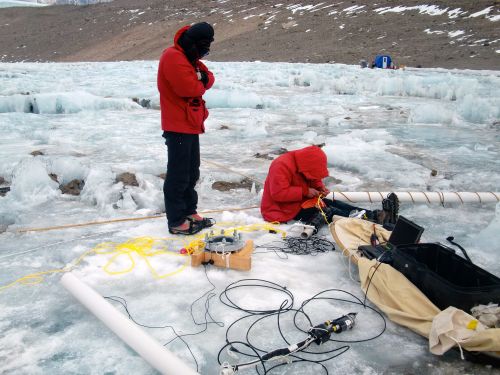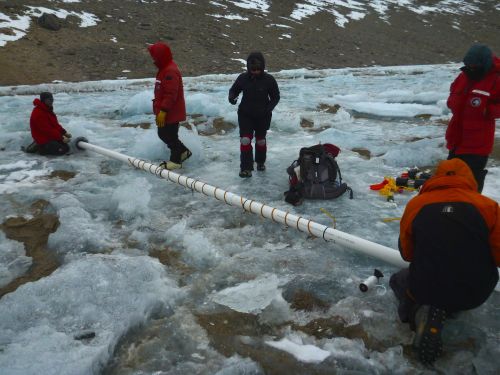Sediment Trap Update
With few days left of our time here, we are focusing all of our attention on installing the sediment traps. (The basic design of the traps was explained previously in the journal titled "Tyler's Pipe Dream".)

The traps have a smart design in a couple ways. Firstly, they are made of inexpensive materials like PVC pipes and items you could find at a fishing supply store. Additionally, they don't require a hole to be melted in the ice in order to be recovered next year, which is good because it would probably have to be melted, which is quite energy intensive and would release a lot of sediment that would obscure our results. These design features reduce the overall cost of the experiment, which means more science for our dollars!

We've needed to make sure they work properly every time they deploy. They must slide through a PVC pipe that we've inserted in the ice cover and then drift away from the hole once they slide through it. This will ensure that they collect sediment that accumulates naturally, and not the bits that might fall through and around the hole we've drilled. They have wings on the bottom to cause them to drift, and we've made many small modifications to the wings to optimize their "flight". We've also tested and retested them, peering at the practice deployments with the drop camera to see how they went.

Tyler put a lot of thought into the design of the traps, and we've worked hard to assemble and test them out. All of this is to make sure that they really do what we want them to do, and measure what they should be measuring.

In the end, the ultimate test of the sediment traps will come when the team comes back to Lake Joyce a year from now and pulls them out of the lake successfully! If all goes well, they will accurately represent the amount of sediment that's collected in those areas of the lake over the year to come.


Comments